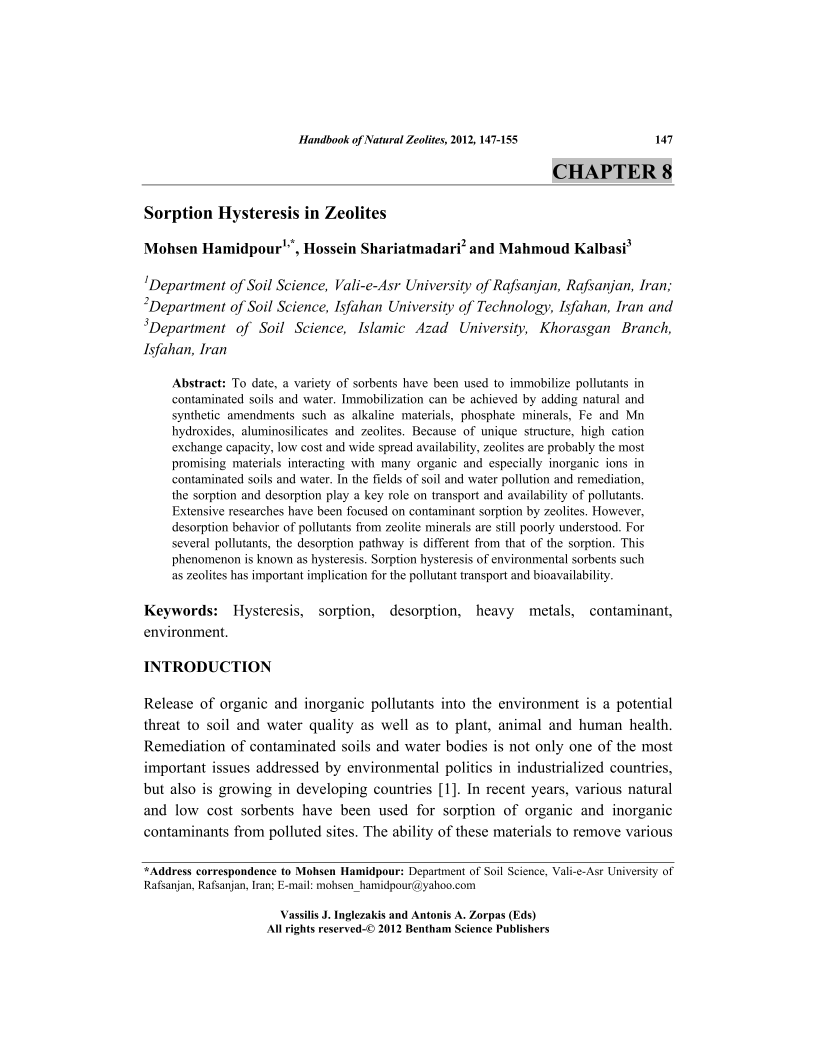Sorption Hysteresis in Zeolites

- Authors: Mohsen Hamidpour1, Hossein Shariatmadari2, Mahmoud Kalbasi3
-
View Affiliations Hide Affiliations1 Department of Soil Science, Vali e-Asr University of Rafsanjan, Rafsanjan, Iran 2 Department of Soil Science, Isfahan University of Technology, Isfahan, Iran 3 Department of Soil Science, Islamic Azad University, Khorasgan Branch, Isfahan, Iran
- Source: Handbook of Natural Zeolites , pp 147-155
- Publication Date: July 2012
- Language: English
Sorption Hysteresis in Zeolites, Page 1 of 1
< Previous page | Next page > /docserver/preview/fulltext/9781608052615/chapter-8-1.gif
To date, a variety of sorbents have been used to immobilize pollutants in contaminated soils and water. Immobilization can be achieved by adding natural and synthetic amendments such as alkaline materials, phosphate minerals, Fe and Mn hydroxides, aluminosilicates and zeolites. Because of unique structure, high cation exchange capacity, low cost and wide spread availability, zeolites are probably the most promising materials interacting with many organic and especially inorganic ions in contaminated soils and water. In the fields of soil and water pollution and remediation, the sorption and desorption play a key role on transport and availability of pollutants. Extensive researches have been focused on contaminant sorption by zeolites. However, desorption behavior of pollutants from zeolite minerals are still poorly understood. For several pollutants, the desorption pathway is different from that of the sorption. This phenomenon is known as hysteresis. Sorption hysteresis of environmental sorbents such as zeolites has important implication for the pollutant transport and bioavailability.
-
From This Site
/content/books/9781608052615.chapter-8dcterms_subject,pub_keyword-contentType:Journal -contentType:Figure -contentType:Table -contentType:SupplementaryData105

